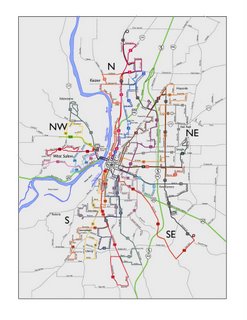 Back in the Eighties, it was, bassist Tony Lewis sang in a clear, bright, strong voice:
Back in the Eighties, it was, bassist Tony Lewis sang in a clear, bright, strong voice:Josie's on a vacation far away,That song, from the album Play Deep, got big play on the radio and on MTV that year, as did a couple other cuts from it: "All the Love In The World" and "Everytime You Cry".
Come around and talk it over
There's so many things that I wanna say
You know I like my girls a little bit older
I just wanna use your love tonight,
I don't wanna lose your love tonight...
Hailing from London's East End, and at first calling themselves "The Baseball Boys" (after that gang out of that bizarre move The Warriors), bassist and singer Lewis, budding guitarist and songwriter John Spinks and drummer Alan Jackman renamed themselves to "The Outfield" when they decided the original name evoked too much of a negative image.
While thier sophomore effort, Bangin', got little notice as I recall, the third album, Voices of Babylon, rendered a very memorable title tune that gets under your skin and stays there. Through subsequent releases, Diamond Days and Rockeye, Spinks' production and musicianship gained polish and Tony's voice remained distinctive (even as the band lost Jackman), and the band forged ahead even though old Moe Mentum was trying to swing the other way.
As a band, The Outfield get little respect I find. I myself came to them late, but I have trouble finding good entries on them in rock music chronicles. This is highly unfair. They have done cool, fun, rocking music that's also accessable while remaining passionate, all the while staying straight-ahead, guitar based rockery that has enough hooks and neat melody to get attention.
The band itself is still together, and fourteen years on from Rockeye (and six years since the interim Extra Innings (Unreleased) comes the enticing, tune-filled Any Time Now. For the past two weeks it's about the only music I've listened to.
The hooks, good melodies, and compelling lyrics are all there, also the hintings of rockers well into thier forties thinking about the world and politics and the future, but also radiolicious bits such as what would be the ready-for-radio album signature "It's All About Love", the sedcutively arranged "Photograph" (this one in heavy personal rotation), and the world-aware "Wasted", "Rainbow's End", and "Peace".
I so totally dig this album. Being an Outfield fan has been a frustrating experience of longsuffering, with a band that never tours outside the southeastern US, and an aloof fan club. Getting this album is like a dash of water in the middle of the desert. Some obvious production problems are evident (there are abrupt cuts on the ends of fadeouts) but the music is just as strong, as well written as Spinks has ever done, and Tony Lewis's clear, high voice still ranks with me as one of the most remarkable in rock music.
Any Time Now, flaw included, is tasty enough that it leaves me hoping they'll release more. And not after another fourteen years.
Technorati Tags: The Outfield, Tony Lewis, John Spinks, 80's Music























